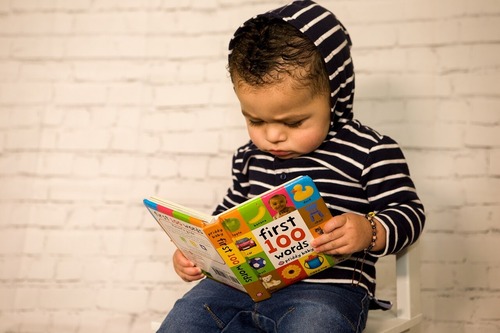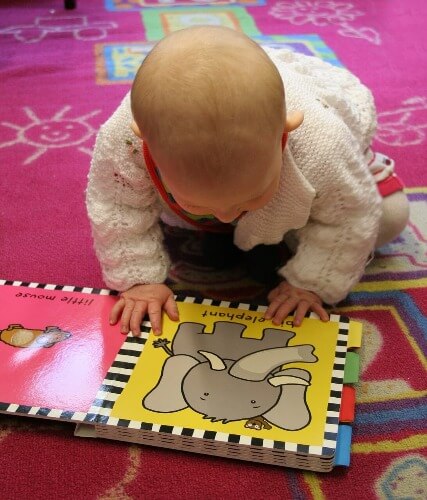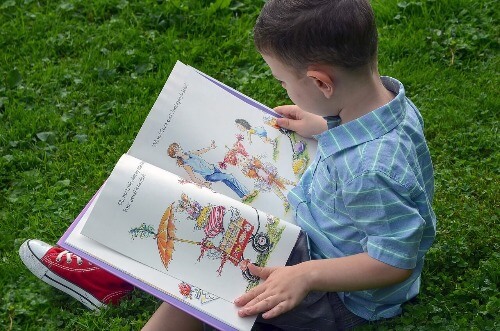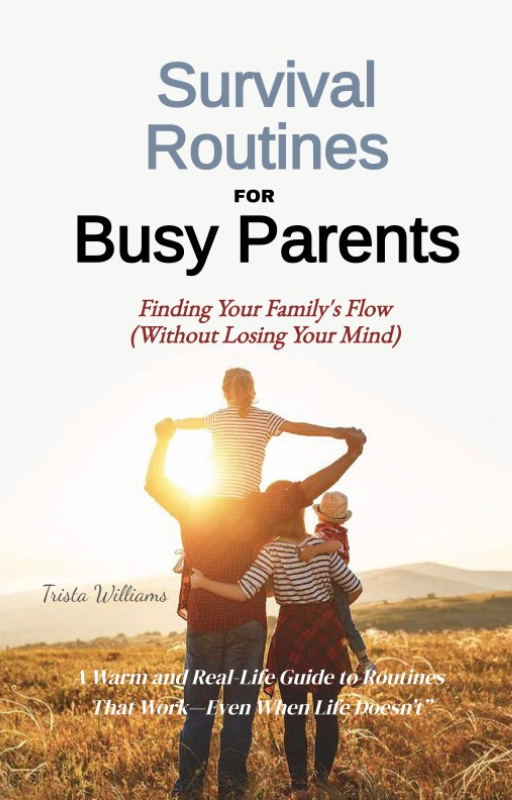Exposing the Power of Reading Comprehension for Young Minds
Reading comprehension is more than simply reading words on a page; it’s about understanding, connecting, and enjoying what is read.
 Little boy sitting on his small chair while reading his picture book.
Little boy sitting on his small chair while reading his picture book.Why is Reading Comprehension Important?
A child with good reading comprehension can:
- Summarize stories and articles
- Identify main ideas and details
- Draw conclusions and make predictions
- Connect with the emotions and motivations of characters
Think of it this way: reading without comprehension is like watching a movie on mute. You see the scenes unfold, but you’re missing the music, the emotions and the context that makes it memorable.
Similarly, true reading is understanding—and enjoying—what’s on the page.
Building Reading Comprehension from an Early Age
Read Aloud, Read Together
One of the simplest ways to build reading comprehension is to read aloud with your child.
Even toddlers can begin to make sense of stories when you engage them with questions like, “What do you think will happen next?” or “How do you think that character feels?”
Here are some ways to make reading aloud effective:
- Use different voices: Bring characters to life with distinct voices. Kids will stay interested and they will understand the different personalities in the story better. ie. Some may think that it is a little silly, but "oh contraire", it is so much fun!
- Pause to ask questions: Questions like “Why did she do that?” encourage kids to think deeper about the story.
- Encourage predictions: Kids love guessing what might happen next, and it helps them think ahead and make connections.
Introduce Picture Books with a Purpose
Picture books are powerful tools for reading comprehension. Books where the pictures help to tell the story are best.
After you read a page, ask your child to describe what they see in the picture and how it connects to the story.
- “What does this picture tell us about the story?”
- “How does the character look?
Encouraging Active Engagement During Reading

Ask Open-Ended Questions
Instead of asking questions that have a “yes” or “no” answer, try open-ended questions that allow children to express their understanding in their own words.
Questions like, “Why do you think that happened?” or “How would you feel if that happened to you?” go a long way in deepening reading comprehension.
Make Use of Re-telling and Summarizing
After reading, ask your child to retell the story in their own words. For younger children, you might prompt them with questions about the beginning, middle, and end of the story.
Building Vocabulary to Boost Reading Comprehension
A strong vocabulary is a major component of reading comprehension. When kids understand more words, they grasp stories and information better.
- Point out new words: Don’t shy away from challenging words! Explain them right away and relate them to something familiar.
- Use context clues: Help your child learn how to figure out meanings from the rest of the sentence.
- Practice synonyms and antonyms: If you come across a new word like “gigantic,” ask your child if they can think of other words that mean the same (big, enormous) or the opposite (small, tiny).
Each new word adds to their toolkit, making comprehension easier and reading more enjoyable.
Make Reading Fun with Games and Interactive Activities
Play Reading Games
Games can make reading comprehension fun and help bring stories to life. Try these:
- Character Hot Seat: Choose a character from a story, and ask questions as if the child is that character. They will understand the characters motives and emotions better.
- Story Sequencing: Write story events on cards, shuffle them, and ask your child to put them in order. This helps them remember story structure.
- Create a “Question Cube”: Create a cube with questions on each side, like “What happened first?” and “Who was your favorite character?” Roll the cube and have your child answer the question about the story you just read together.
This is a simple way to prompt discussion and reflection on what they’ve read, boosting their reading comprehension.
Helping Kids Overcome Common Challenges in Reading Comprehension
Not all children take to reading comprehension naturally, and that’s perfectly okay.
Here’s how you can help them navigate common challenges:
- Struggling with Attention: Break stories into small sections and take breaks. Praise their focus and keep sessions short to match their attention span.
- Difficulty with Complex Texts: Choose books that match their reading level. Gradually introduce more challenging texts as they grow comfortable, and support them by reading together.
- Feeling Overwhelmed by New Vocabulary: It’s normal to struggle with new vocabulary. Revisit challenging words regularly and encourage their efforts—patience is key!
 Toddler sitting on the grass and is looking at the pictures in the story book.
Toddler sitting on the grass and is looking at the pictures in the story book.Encouraging a Love for Reading
Finally, remember that reading comprehension thrives in an environment where reading is a joyful, shared experience.
Here are a few tips for making reading something they love:
- Let them choose: Give children some freedom to pick their own books. When kids read stories that interest them, they’re naturally more engaged.
- Be a role model: Share your favorite stories or books with them, or read together as a family. Enthusiasm is contagious!
- Celebrate progress: Recognize their achievements, big or small. Whether it’s reading a new word or finishing a book, a little praise goes a long way.
Wrapping Up: The Joy of Understanding Together
Helping your child build reading comprehension is a journey. There’s no single “right way” to teach comprehension, so find what works for your child, embrace the journey, and enjoy each moment.




















New! Comments
Have your say about what you just read! Leave me a comment in the box below.